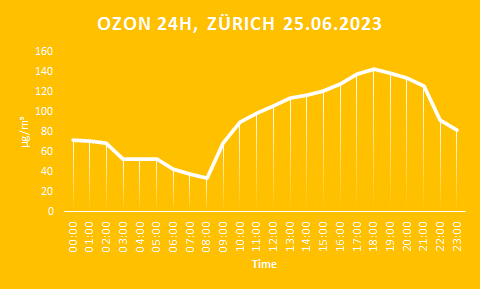Most people in Europe are enjoying the wonderful summer weather, yet for runners it poses a major challenge. In this article, we analyze the potential problems that can arise from elevated ozone levels and explain when appropriate action should be taken.
What is ozone and when does it occur?
Ozone is a highly reactive form of oxygen that is found in the Earth’s atmosphere and can be of both natural and man-made origin. While it forms a protective layer in the upper atmosphere, called the stratosphere, protecting us from the sun’s UV radiation, it can be a problem for our health in the lower atmosphere (the troposphere).
Here, ozone is formed by a chemical reaction between air pollutants such as nitrogen oxides (NOx) and oxygen O2 under the influence of UV radiation, or in short, when sunlight meets air pollutants.
Create a customized and dynamic running training plan with running.COACH, which will prepare you for your running goals based on your current fitness level.
Click here to try running.COACH for free
What symptoms and problems can ozone cause?
Ozone in the air can irritate the respiratory tract and cause symptoms such as coughing, respiratory distress, mucous membrane irritation and inflammation. People who are particularly sensitive, such as those with asthma or other respiratory conditions, are at higher risk. The physical exertion and the associated greater amount of “saturated” air logically leads runners to be exposed to a greater amount of ozone-laden air.
Ozone levels during the day

A look at the graph above, which shows the ozone values for a June day in Zurich, makes it clear: Starting at 8 a.m., ozone levels begin to rise on a sunny summer day. They reach their peak at 6 pm.
According to “Lungenliga Schweiz”, health reactions are to be expected from a concentration of 120µg/m³. So on a hot and very sunny summer day it is recommended to go running before 12 o’clock or after 21 o’clock in the evening.
How to adapt the training to the ozone levels?
The optimal times for outdoor activities in summer are usually early morning, before high ozone levels build up, and late evening after 9pm, when levels have decreased.
During the brightest part of the day, it is advisable to exercise in gymnasiums or fitness centers. Runners who struggle with coughing and watery eyes on sunny days generally benefit from indoor activities.
Modern fitness clubs are often fully air-conditioned, allowing for a comfortable workout even in extreme outdoor temperatures. In addition, the risk of sunburn is eliminated. Here, you can really work out and maybe even participate in a refreshing aqua fitness program.

